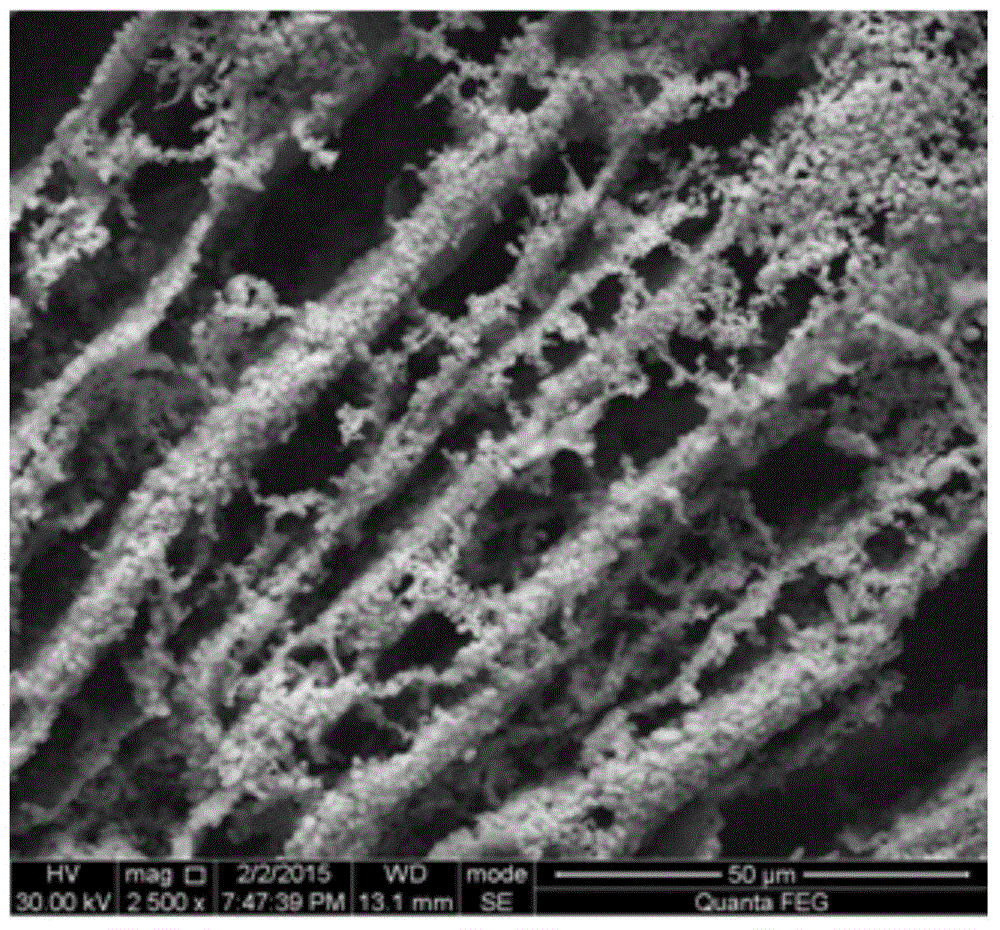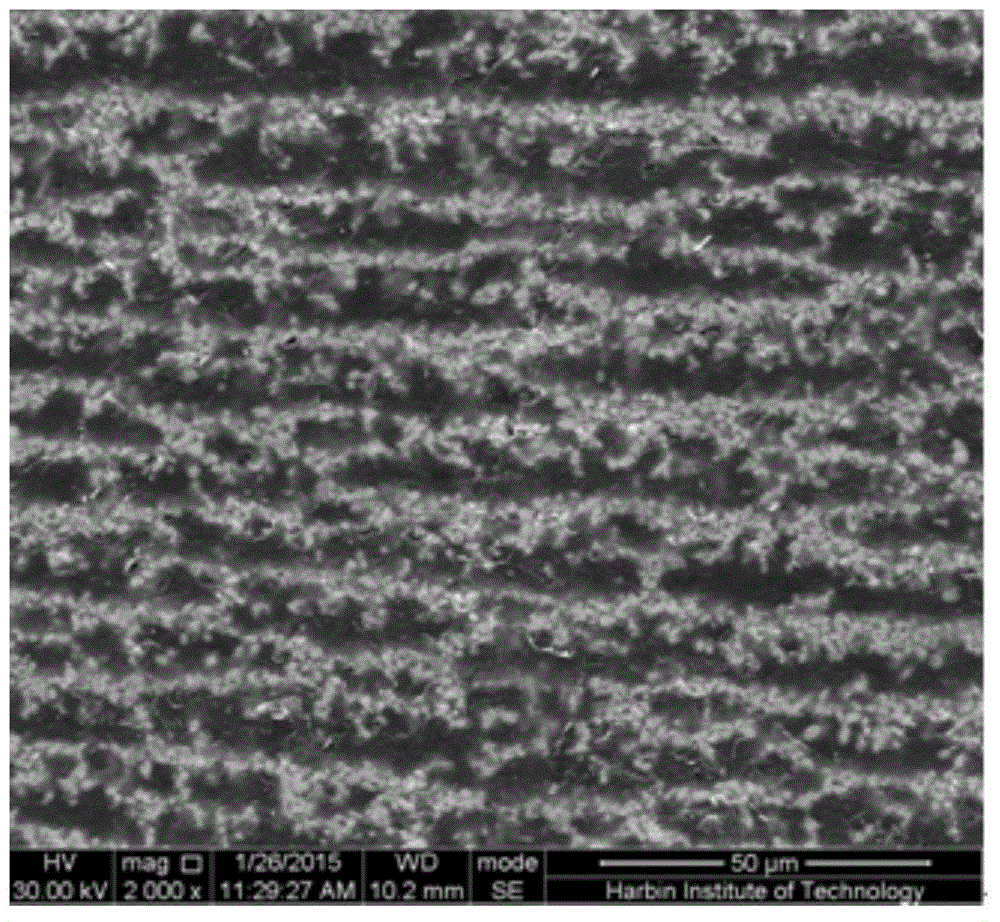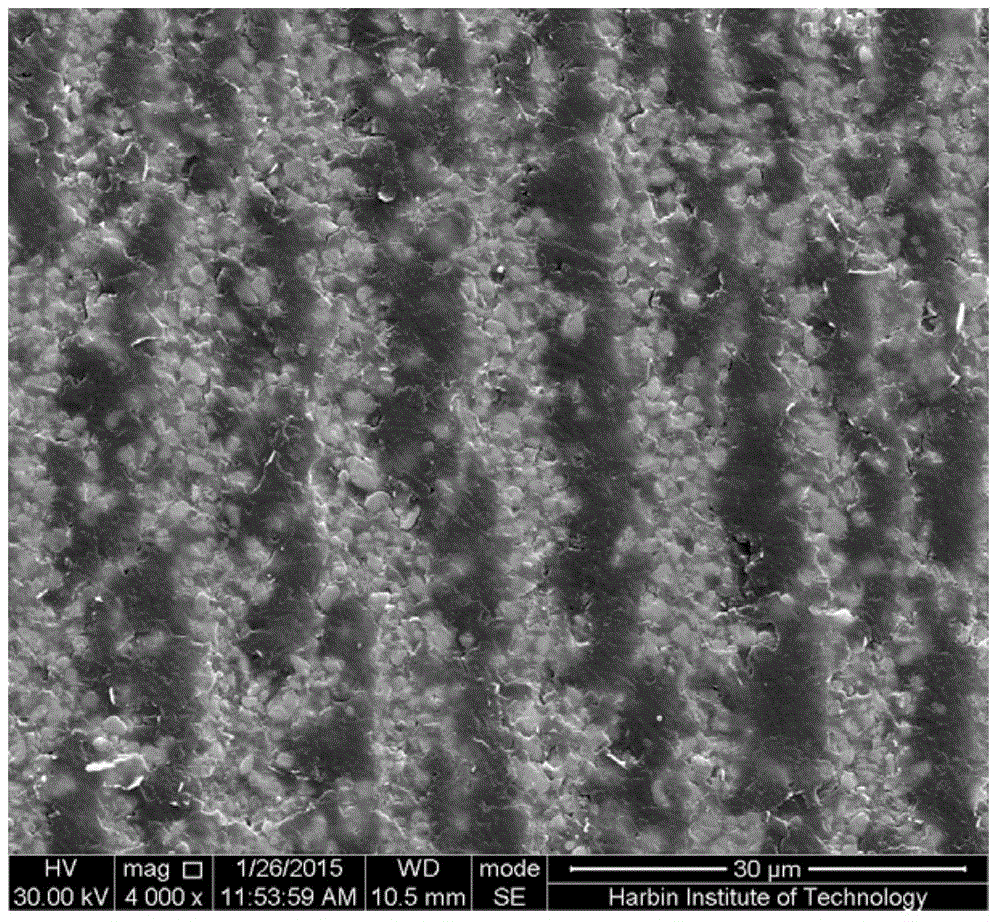Preparation method for microwave dielectric ceramic/resin bicontinuous composite material for PCB substrate
A technology of microwave dielectric ceramics and composite materials, which is applied in the field of preparation of composite materials, can solve the problems of large dielectric loss of ceramics, and achieve the effects of high density, reduced interface polarization, and low water absorption
- Summary
- Abstract
- Description
- Claims
- Application Information
AI Technical Summary
Problems solved by technology
Method used
Image
Examples
specific Embodiment approach 1
[0021] Specific implementation mode 1: In this implementation mode, the preparation method of microwave dielectric ceramic / resin double continuous composite material for PCB substrate is carried out according to the following steps:
[0022] 1. Add deionized water to the ceramic powder, the volume ratio of ceramic powder to deionized water is (1~2):(3~4), add dispersant and binder, mix and disperse in the mixer for 12 hours, Obtain a uniform and stable slurry;
[0023] The addition amount of the dispersant is 0.5-1.0% of the mass fraction of the ceramic powder, and the addition amount of the binder is 1.0% of the mass fraction of the ceramic powder;
[0024] 2. Pour the slurry in step 1 into a mold after vacuum defoaming for 10 minutes, keep it warm in a low-temperature refrigerator at -60°C for 10-20 minutes, and then freeze-dry for 2-3 days to obtain a porous ceramic green body with oriented pores;
[0025] 3. Place the porous ceramic green body in a muffle furnace, raise t...
specific Embodiment approach 2
[0027] Specific embodiment two: the difference between this embodiment and specific embodiment one is that the ceramic powder described in step one is ZnNb 2 o 6 Ceramic powder or BaTi 4 o 9 ceramic powder. Others are the same as in the first embodiment.
specific Embodiment approach 3
[0028] Embodiment 3: The difference between this embodiment and Embodiment 1 or 2 is that the dispersant described in step 1 is polyacrylic acid (PAA). Others are the same as those in the first or second embodiment.
PUM
| Property | Measurement | Unit |
|---|---|---|
| water absorption | aaaaa | aaaaa |
| water absorption | aaaaa | aaaaa |
| dielectric loss | aaaaa | aaaaa |
Abstract
Description
Claims
Application Information
 Login to View More
Login to View More - R&D
- Intellectual Property
- Life Sciences
- Materials
- Tech Scout
- Unparalleled Data Quality
- Higher Quality Content
- 60% Fewer Hallucinations
Browse by: Latest US Patents, China's latest patents, Technical Efficacy Thesaurus, Application Domain, Technology Topic, Popular Technical Reports.
© 2025 PatSnap. All rights reserved.Legal|Privacy policy|Modern Slavery Act Transparency Statement|Sitemap|About US| Contact US: help@patsnap.com



